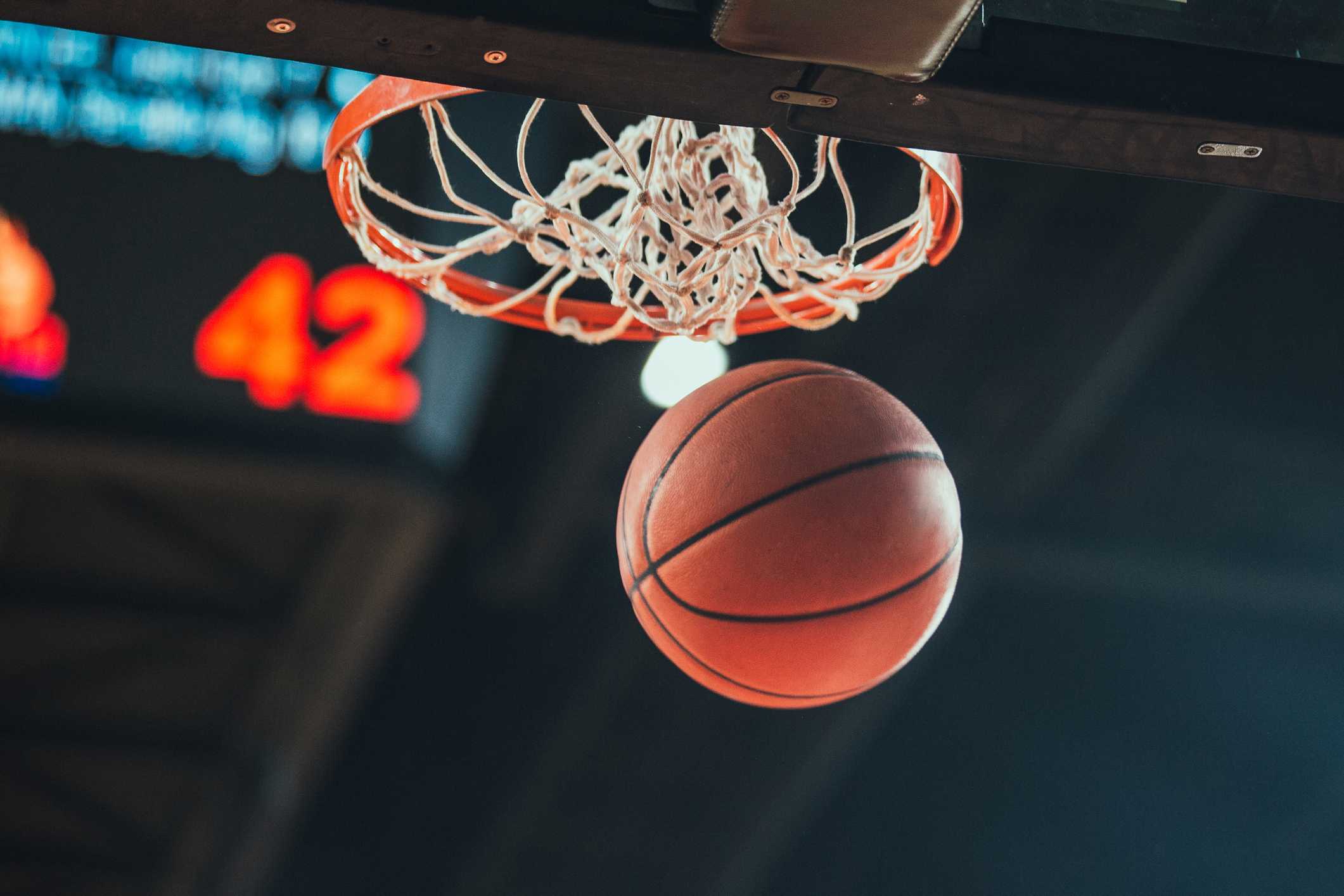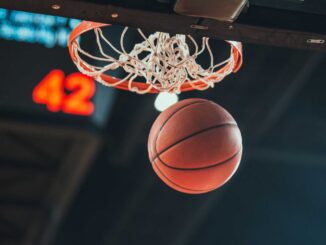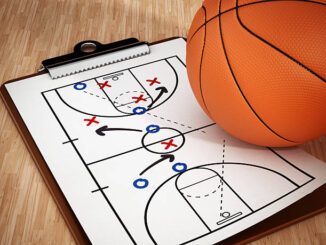
If you’ve coached basketball for a few years, you probably have special memories of special players.
For me, Sara is one of those.
It was September and we were re-forming our seventh grade travel team in preparation for the new season. We had filled most of our roster but had one spot open that my assistant and two parent-advisors wanted to fill with a power forward, especially one who was 5’5″ or taller.
We put the word out about our situation, but after more than two weeks, we hadn’t found the player we were looking for.
Then, I got a call from a lady named Julie who said her daughter, Sara, wanted to play year-round basketball and she matched our needs very well. I asked her if her daughter was 5’5″ or taller and she hesitated.
“Well, she’s not here right now but she’s almost as tall as I am and I’m 5’5”.”
I asked her what kind of experience Sara had and she said, “Well, she’s in the church league so that has to amount to something.”
Actually, all it amounted to for me was a sigh. Church leagues in our area were notorious for not having any idea about developing players and, in many cases, stunting their development with regimens that amounted to pure heresy; that is, if you’re a disciple of basketball.
I told her I didn’t think her daughter was ready to compete at a travel-ball level but she asked if Sara could at least come to one of our practices so I could assess her personally.
Her passion caused me to stop and think.
“She’s fast,” Julie added. “Like— really fast.”
Suddenly, my interest peaked. We had some fast players, but we didn’t have anyone fast enough to catch the point guard from a cross town rival, a girl who had been in the Olympic training program for two years and would later become a four-year starter on UCLA’s soccer team.
I asked her how fast “fast” was and Julie said that Sara beat everyone in school sprints—including boys. “And she’s Greek on her father’s side and he was a sprinter on his national team.”
Gulp.
How could I pass genetics like that? I asked her to bring Sara to our practice later that afternoon.
When they arrived, I felt a bit deflated. Sara was certainly not 5’5”. I doubted she was anything more than five-foot.
She was instantly likable because she had a smile that was warm and perpetual. She was a pretty girl with sandy hair and a naturally tan complexion. In time I would learn that she had an uncommon understanding of life and she was committed without compromise to decency, kindness, and morality.
While those were fabulous traits, I didn’t think they compensated for dribbling with two hands and blasting flat shots off the backboard.
But wow, could that girl move. She won full-court sprints by impressive margins and her agility in defensive drills was amazing. Her quickness, change of direction, and top-end speed were beyond any player I had ever coached.
After practice, Julie wanted to know if Sara had shown enough to be on the team. I told her I wasn’t sure but I invited them to our next practice.
My assistant and advisors were concerned that I was considering a new player who had no hand skills, no understanding of the game, and certainly wasn’t a power forward. I agreed with all of that and told them I need to think things over.
And so I did. And, I managed to come up with a plan.
I watched Sara closely at our next practice to make sure I had assessed her correctly and after practice, I told Julie and Sara that I would put her on the team with the condition that she work with me in one-on-one training twice a week until her hand skills developed.
They jumped at the opportunity.
But, she never made it through her first practice.
When she arrived at our gym, I was talking to one of our players who was telling me about something she had experienced. Her arms were waving as she talked and as she gyrated to make a particular point, she caught Sara right on the nose. She had no way of knowing that Sara had been approaching from behind.
Both of them cried. I’ve never been sure which one hurt the most.
That was the only practice Sara missed in our two years together.
She also didn’t miss any of our training sessions and she kept her word to practice drills at home. It was clear that she was serious and committed. I’ve worked in one-on-one training with dozens of girls but none surpassed Sara when it came to growing in skills.
Within two months, she became a starter, and a short time later, she began to regularly score in double-digits. Not long after, she was able to dribble eyes-up under pressure, which enabled me to give her time at the point. She gained the ability to be our primary point guard but she had a much greater preference for off guard.
The day arrived when we had a showdown with our cross-town rival and she amazed everyone when she kept pace with a UCLA-bound guard and twice caught her from behind. Mine wasn’t the only jaw that dropped.
Sara had a magnificent season and was on her way to becoming a high school prospect. She was excited to see that in her future. However, because of one event that only lasted a few seconds, she would change her mind and never even try out.
Early in our next season, we scheduled a one-day shoot-out at a venue 75 miles to the south. We narrowly won our first game but it was the second game that became a headliner.
Our opponent was an athletic team that often leveraged opponents with two fast guards. Sara was so much faster than either of them that I remember thinking that she could dribble faster than they could run. As the game wore on, those two guards were showing signs of frustration that they couldn’t catch a girl who looked fresh off the beach.
By the second half, the opposing team began pushing and verbally abusing our girls.
Ant that is when they attacked.
Sara had just stolen the ball and bolted for a lay in. Just as she slowed so she could return to the defensive end, one of the opposing guards rammed her from behind hard enough to knock her to the floor. Another girl jumped on her back and began pounding her between the shoulder blades.
I raced to Sara’s defense wondering how I could possibly grab that opposing player without causing a riot. I was relieved when I heard an approaching official yell, “No, no! Don’t touch her! I got this!”
After the game, the other team refused to shake our hands or even look at us. The opposing coach had a huge smile but when I tried to talk to him, he just kept his huge smile, looked me in the eyes, and walked away with a laugh.
Sara and two other of our players said the other girls had threatened to beat Sara on her way out of the gym. Sara was shaking and more frightened than before.
I gathered our parents and explained the situation and we assured Sara that we would surround her like a battalion and no one would lay a hand on her. She didn’t seem completely sure of her safety but she wanted out of that gym so she agreed.
The other team and a few parents were waiting for us. We had done nothing wrong and had not retaliated whatsoever to their attacks, yet they glared at us. They said things that I never understood but they never attacked.
A few months later, Sara created another legacy for us.
We were playing a tournament in an adjacent town. Our first game was scheduled for a newer facility that had block walls and a metal roof. It was bright and well-designed but it was built next to open fields and when the wind blew, which it did that day, a thin layer of dust would sift over the playing surface. Attendants tried to clean the floor often, but it wasn’t enough.
In situations like that, I often used rubbing alcohol to clean our girls’ shoes before games and I put a wet towel near our bench. It looked like this would be one of those times.
My players were watching the game before ours and noting tendencies of one of the teams we would play later. It was an exciting game and when fans erupted with excitement, their voices bounced off the hard walls and roof and sounded like a blaring amplifier.
At one point, the noise was deafening and in the midst of it, Sara motioned to me from about 15 feet away and when she got my attention, she yelled something. But, since the crowd noise was so loud, I couldn’t hear her and I waved for her to say it again.
In that very instant she began to yell out, the crowd went totally silent and all that could be heard was the voice of a 13-year-old girl screaming, “Coach, can I have some alcohol?”
Now, what would you do if you were in my shoes?
Would you just say “Shhhhhhhhh!”
How about, “No. Not now!”
Is there any response that wouldn’t sound incriminating?
The following May, our team ended because the girls were graduating from middle school and they would all try out for their high school teams in June.
Everyone . . . except Sara.
I didn’t know that she had not gone to the tryouts until weeks later. We talked. I told her that my relationship with her high school coach was enough to get her a private try out but she refused. As the minutes passed, I realized that she had a more gentle spirit than I had thought and her preference to play only among friends was the right choice for her.
Although we were no longer a part of the same team, Sara helped me through the years in our Summer league for middle school girls.
One day in March, I received an invitation to her sixteenth birthday celebration at a local Greek restaurant. It was an honor and a memory that still matters to me today.
In this lifetime, we sometimes meet people who are truly special and very memorable.
Sara will always be truly special and very memorable.
And I’m proud to say that those memories are for more than her asking me for alcohol in a room full of people.




